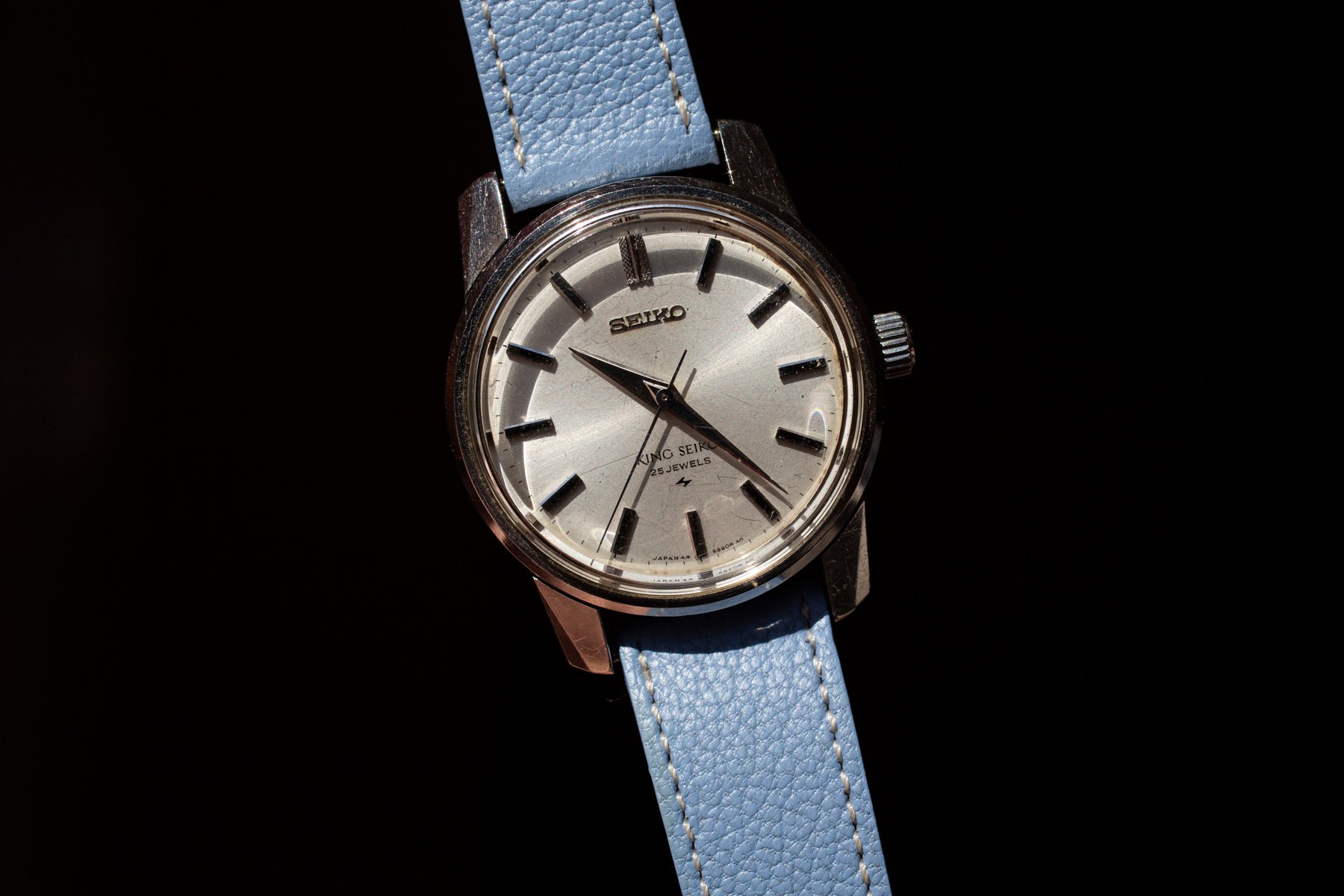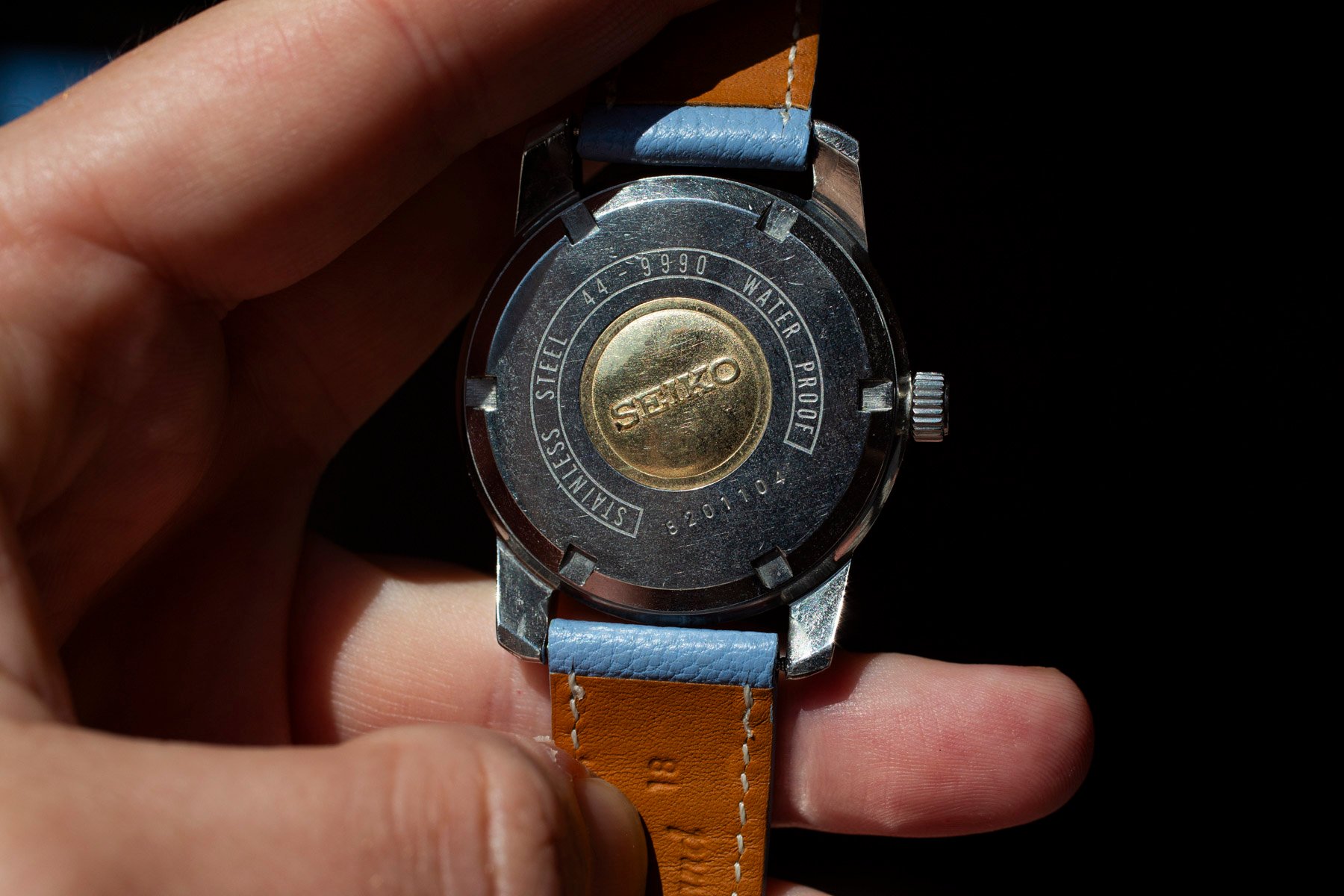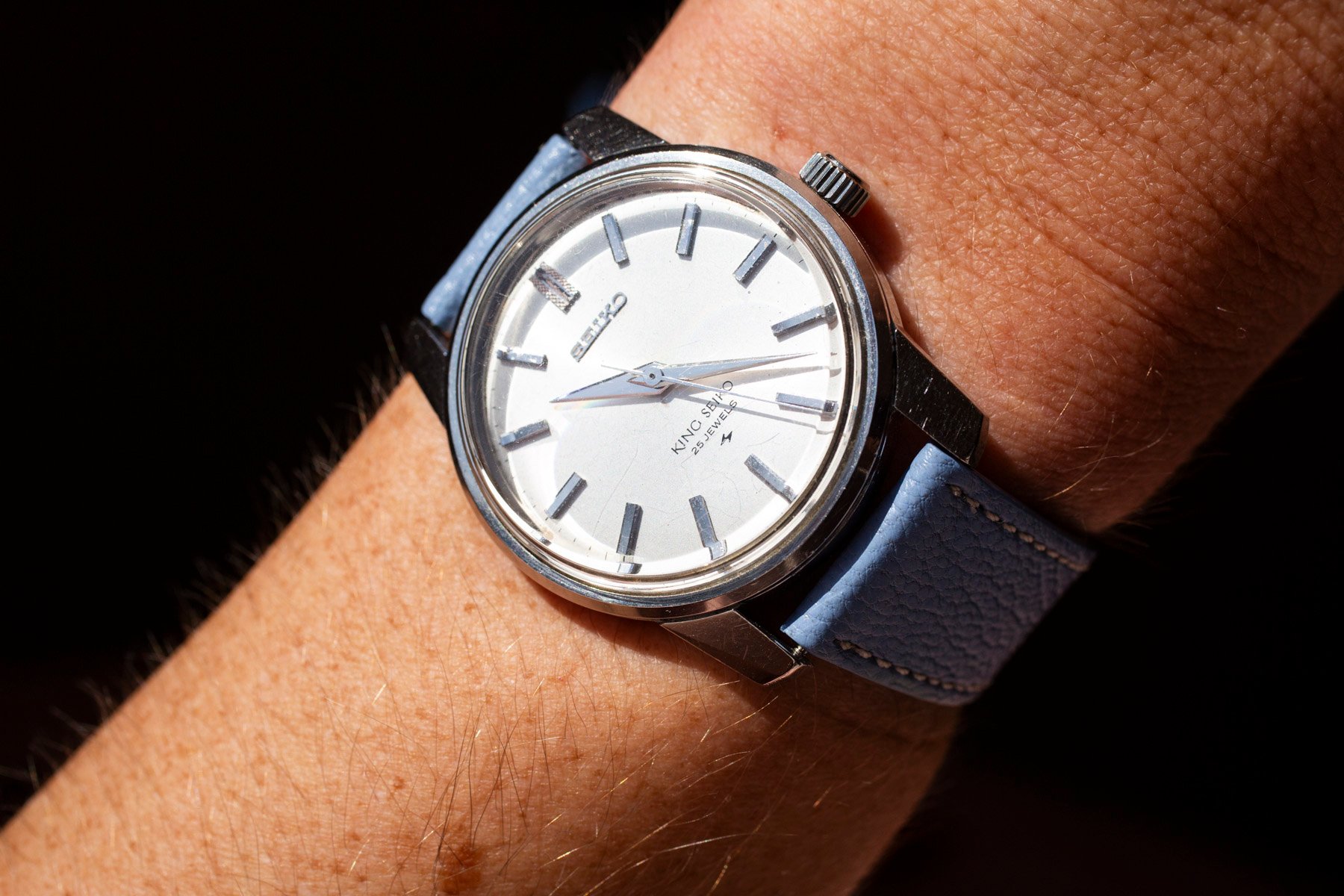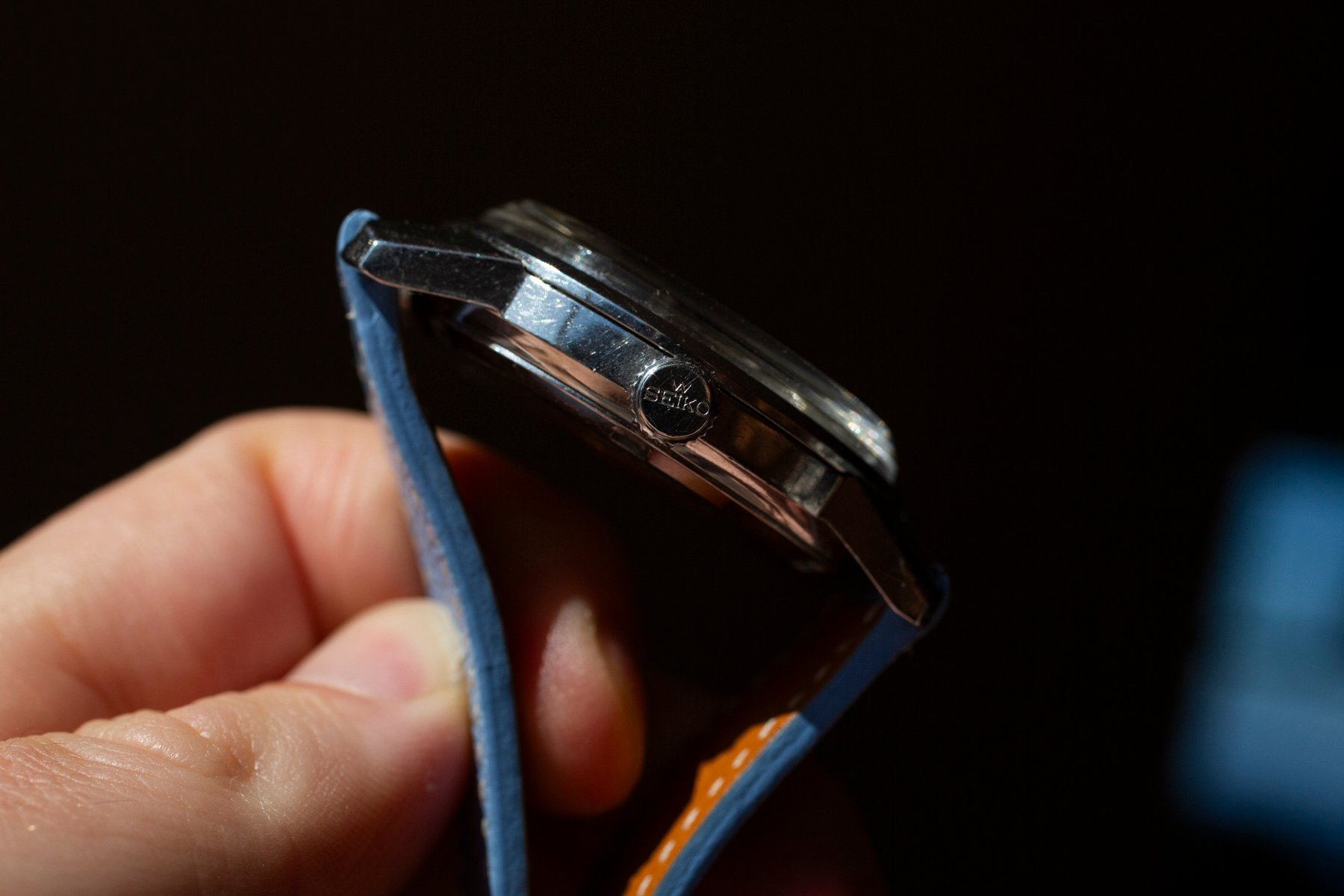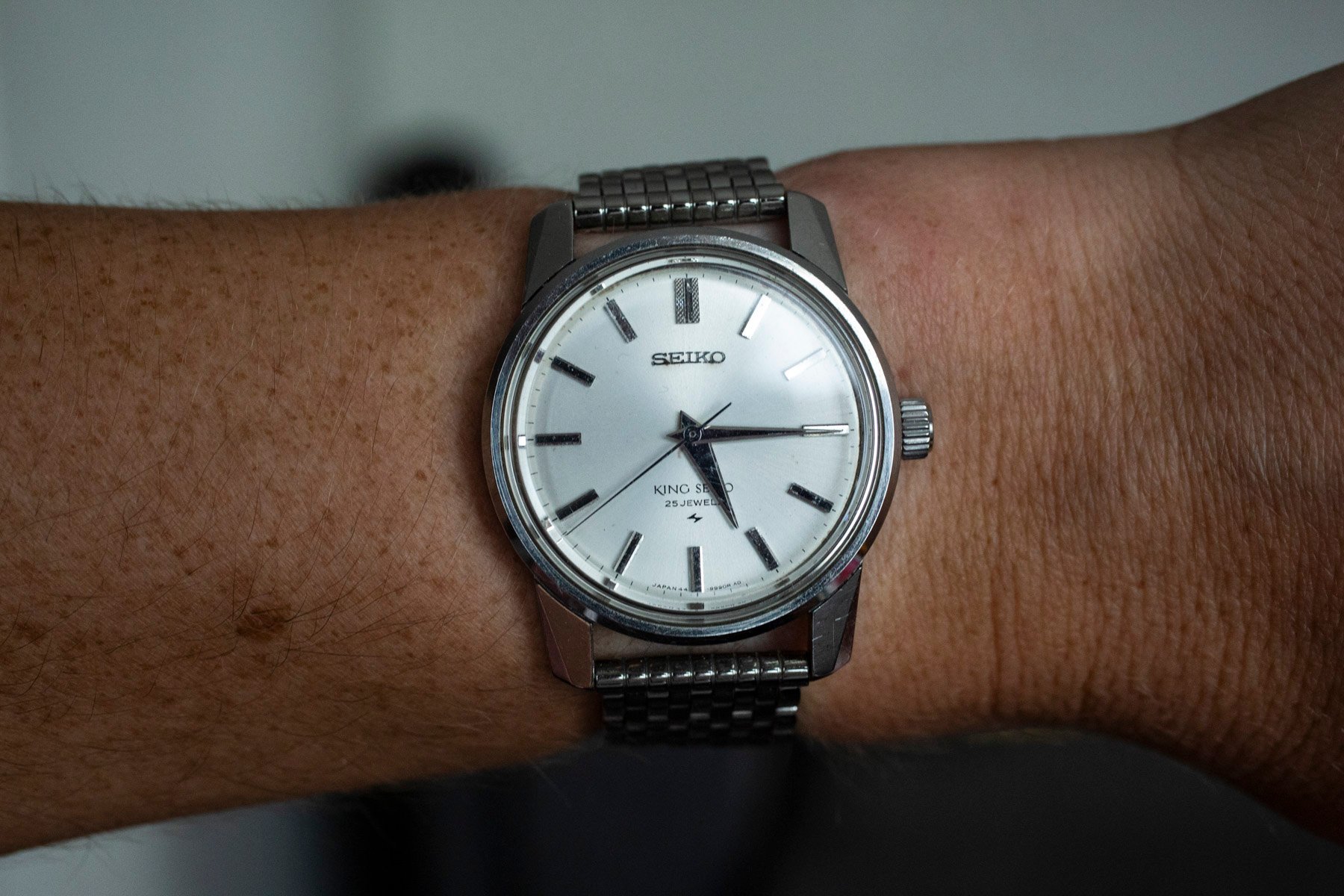Breathing New Life Into A Vintage King Seiko 44-9990
Vintage King Seiko presents a fantastic opportunity for affordable options that reflect excellent watchmaking. The King Seiko 44-9990, also known as the 44KS, is one such example.
Recently, I had the opportunity to acquire a King Seiko 44-9990. For many newer enthusiasts, King Seiko is a name that is more familiar in the context of the modern Seiko brand. That modern context has King Seiko as a product line that sits somewhere in between Grand Seiko and Seiko. But in the 1960s and into the mid-1970s, King Seiko represented some of the best of what Seiko had to offer. During that decade, King Seiko and Grand Seiko were essentially in-house competitors, each with a separate factory. The concept was that internal competition would create better products and encourage ingenuity.
Seiko’s Grammar of Design
The theory paid off. Many iconic Grand Seiko models were produced during that time, as aficionados of the brand know. But this was also true of King Seiko. Utilizing the Grammar of Design, a concept initiated by Seiko designer Taro Tanaka, cases used wonderfully sharp angles. This led to Grand Seiko’s iconic 44GS case. These bold designs were supposed to have been inspired by methods of gem cutting.
The 44-9990 is probably one of the best examples of this. Its case, as my colleague Mike Stockton notes, is one of the factors that make it a true vintage masterpiece. This impression is shared by many of those passionate about vintage Seiko in particular. For more information on this model, I encourage you to read Mike’s feature.
Bringing the King Seiko name back from the dead
A few years ago, Seiko resuscitated the long-dormant King Seiko name. This included a special (and expensive) limited-edition model. But its first iterations of a standard model with a 6R-series movement created some controversy. Seiko fans were quick to point out that there was a dissonance between putting a workhorse caliber into a watch line that, historically, focused on releasing higher-end watch movements as a Grand Seiko rival (some of the best Seiko had to offer at the time).
This feedback must have sparked a rethink. Seiko has now released versions that have a higher-end movement, the 6L35. This movement is widely considered to be on par with an ETA 2892 or Sellita SW300 series. This release fits more neatly into the heritage of the King Seiko name, and by all accounts, these are nice watches in the metal. The release of these higher-end King Seikos was likely a good strategic move by Seiko. Whether this was a reaction to criticism or part of a wider strategy is hard to discern, but consumers now have different options, at least.
The King Seiko 44-9990
Perhaps the biggest challenge that Seiko has in making the case to a consumer to buy a modern King Seiko is vintage King Seiko. I would argue that the best option is to simply find one of the iconic King Seiko models in good condition. Luckily, I recently acquired a King Seiko 44-9990, which is a real thing of beauty to behold. It was my father’s, but I did a trade for a different watch. I’d always enjoyed the beautiful silver dial and how the indices caught the bright antipodean sun. The 44-9990 has a 36.5mm × 43mm × 11.5mm case with a 19mm lug spacing. Thankfully, it’s stainless steel, not chrome plated like some watches of the era were. This King Seiko also houses a 25-jewel 44A movement, which features hacking and runs at a stately 18,000vph frequency.
It features a screw-in case back adorned with a gold medallion. Seiko also equipped the watch with a tall acrylic crystal that juts above the beautiful silver dial. The case has a signed “Seiko” crown, but there were issues with my particular watch. While all-original, it was not perfect. For one, it had an unknown service history. Unfortunately, it also didn’t keep good time, perhaps being off by up to a couple of minutes a day. I knew I needed to service it. Therefore, rather than spending money on a new King Seiko that reflected the original’s design, I opted to find a good watchmaker who could help breathe fresh life into this original one from the 1960s.
Finding a watchmaker for vintage King Seiko
Finding a watchmaker who can service vintage Seiko watches is no easy task. Well, at least it was no easy task for me. You see, Seiko refuses to service many older watches, sometimes including ones older than just 10 or 15 years (which isn’t that old in the watch world). This is an onerous state of affairs, as anyone who has older Seiko watches has already found out. This is where having a common Swiss movement can help significantly in prolonging a future servicing lifespan.
Luckily for me, a watchmaker about two hours north of my home still had access to old King Seiko parts and had the expertise to work on these movements. It was a word-of-mouth affair to find this person within the local watch community, but I finally did, and before Christmas last year, I sent in my watch. Given the watchmaker’s specialized expertise, the wait to have my King Seiko 44-9990 serviced was about six months.
Servicing the King Seiko 44-9990
Just recently, the beloved King Seiko returned home after its overhaul. While it’s not immaculate like a new watch, it now keeps time within COSC parameters. Manually winding the movement is nice and smooth and a real joy to do.
When opening the case, the watchmaker found that it had not been serviced since the very start of the 1990s before I was born! It’s impressive how long a mechanical watch movement can soldier on, though I don’t recommend pushing it. A lot of work had to be done, including an overhaul of some components. No polishing or redialing took place, though, as I’m not into that sort of thing.

Final thoughts
The whole experience was well worth it. I was very happy to pay a local watchmaker to bring this vintage King Seiko 44-9990 back to life. There is something quite appealing to me about spending money to support a local business to revive an old object rather than dumping money on a new one. This sentiment seems to get stronger the longer I’m in this hobby.
What do you think, Fratelli? Would you go for a vintage option, or would you prefer to go new? Let me know in the comments.

